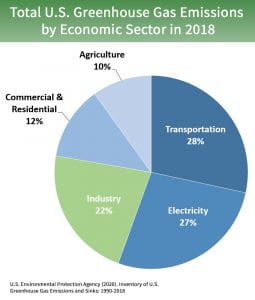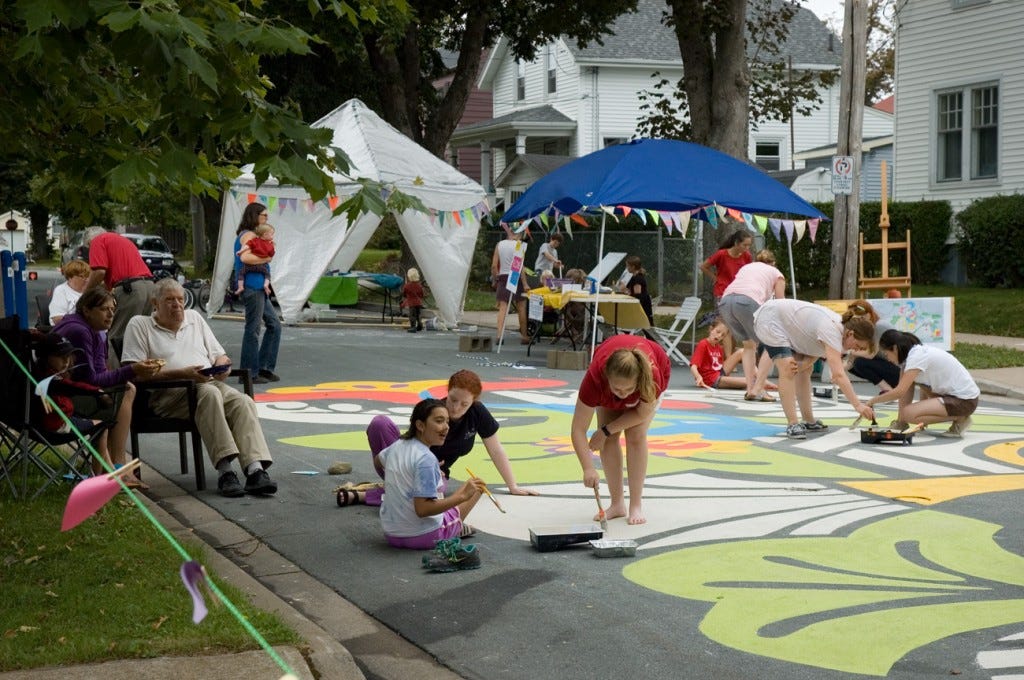
In the past few years, transportation has taken the number one spot in creating the most greenhouse gas emissions. In figure 6, you can see that in 2018, transportation just barely passed electricity and in recent years it has still increased until COVID. Transportation is still number one, but COVID had a lot of people staying home and fewer people were driving at the time. Not only do green transportation alternatives help with exercise, but they also help with reducing emissions. So not only is the Earth benefitting from walking, biking, etc., you as a person are also benefitting from the exercise. Physical activity reduces the risk of many harmful diseases, like heart disease and diabetes that can really hurt you in the long run while allowing the environment to reduce its own harmful ‘diseases’. Environmental benefits can range from fewer gas emissions, less pollution, less noise, and congestion (United Nations Habitat, 2009). Not only are these huge physical and environmental benefits, but there are also economic benefits when you no longer have to pay for a car, car insurance, or gas.
These benefits can be hard to obtained when cities are not providing the right resources. During my interview, Thomspon said how she always had access to “grocery stores, health centers, access to the T, places to bike, and lives close to a park”. For her, living in Boston is wonderful because she has access to all of these places, but others that do not have access to those places are being neglected. There needs to be bigger sidewalks, affordable housing, and more access to basic necessities if Boston wants to complete their action plan. This is why the topic of jaywalking came up in my interview because people value vehicles more than the pedestrians on the street, which is what we need to change. Jaywalking is crossing the street without a crosswalk or walking on a road that does not have a sidewalk. There should be more room for pedestrians to walk and bike instead of car lanes and parking. While it seems like this law is supposed to keep you safe, it was actually put in place by the automobile manufacturers because they cared more about people driving than the roads (Stromberg, 2015). As you can see in figure 7, automobile sales started to grow during the 1920s and that was exactly when the jaywalking law was created.

In figure 8, you can see that this was a busy road during the 1914’s where there are hundreds of people in the street. The automobile manufacturers wanted all of these people gone so there was more room for vehicles. So, the only real reason why jaywalking was made illegal was because manufacturers wanted to make more money by selling more vehicles. The majority of people who were dying due to cars were the elderly and children which created an uproar because all they were doing was being in the street. Jaywalking does not keep anyone safer because people continue to break the law every day.
:format(webp):no_upscale()/cdn.vox-cdn.com/uploads/chorus_asset/file/2936360/82104296.0.jpg)
One of the biggest reasons why so many children were dying was because of automobile accidents. In 1923, over 17,000 people were killed by cars and that was a 47% increase from 1920 (Johnson, 2013). There were large gatherings and protests against vehicles because the public wanted something to change. This is so important on why children should have public space to play. Public spaces bring people together from all “walks of life and income groups” allowing children and adults to meet new people (Project for Public Spaces & UN Habitat, 2012). This allows no group to dominate a space and allows anyone who wants to come. When a city is lacking public space, it can lead to segregated neighborhoods. Public spaces are necessary to allow children to go outside and have fun without worrying about being hit. Boston has a lot of parks and other things, but not a lot of public space for just children. A lot of people complain about the younger generation because they do go not go outside as much, but for some, they physically cannot without worrying about getting hit. Examples like figure 9 show spaces where children can run around freely while not worrying about cars.
